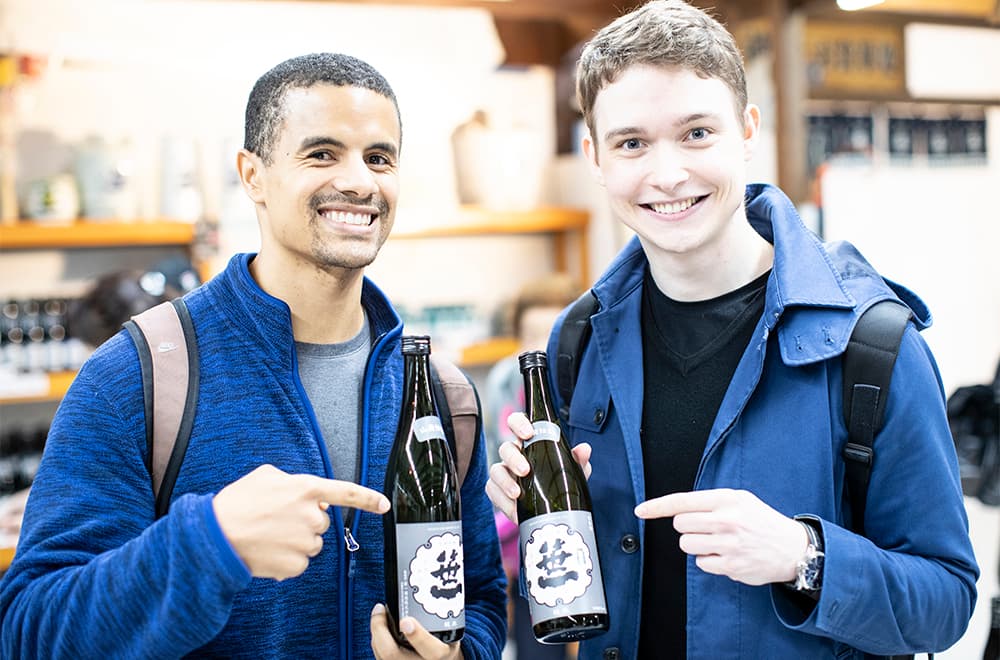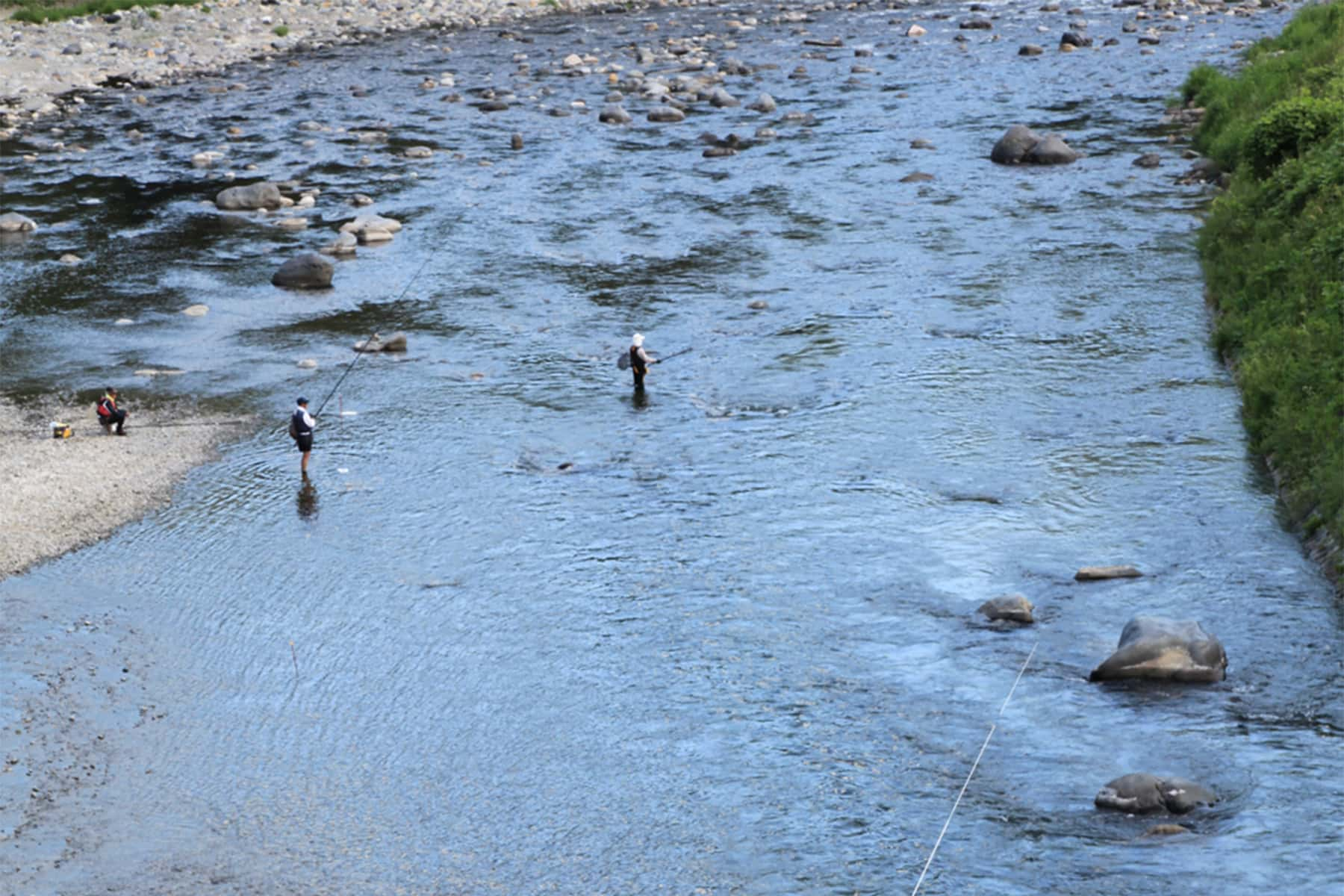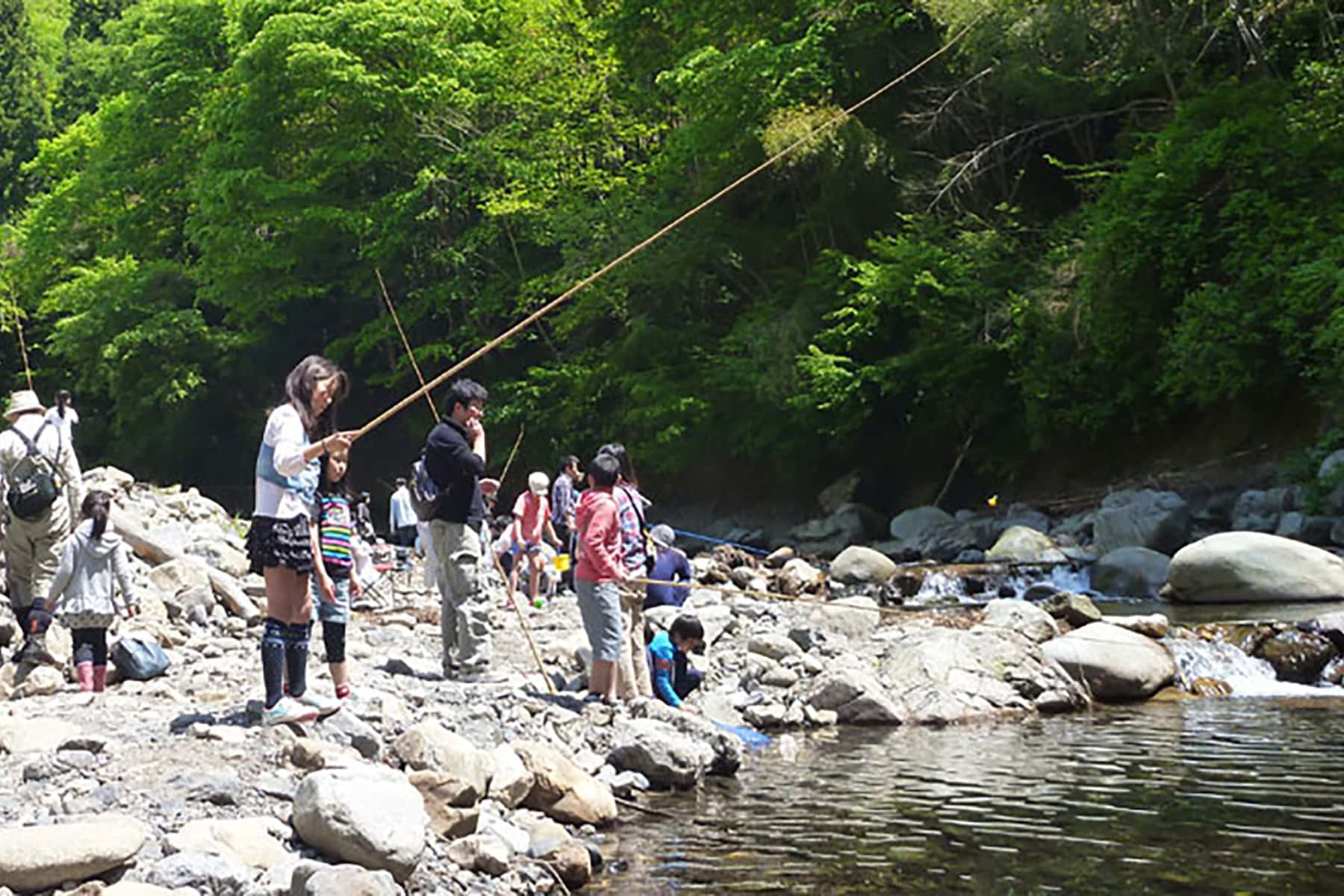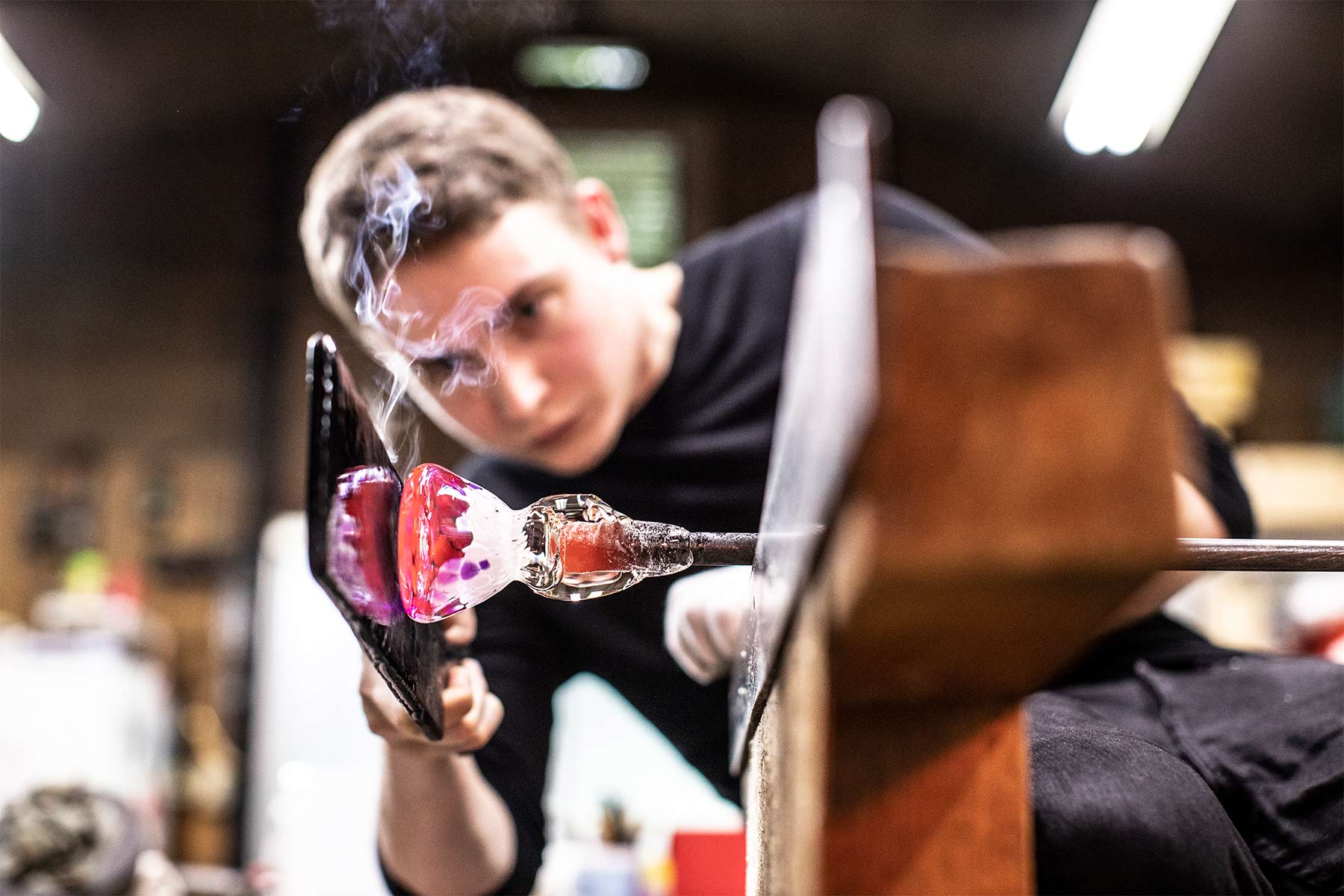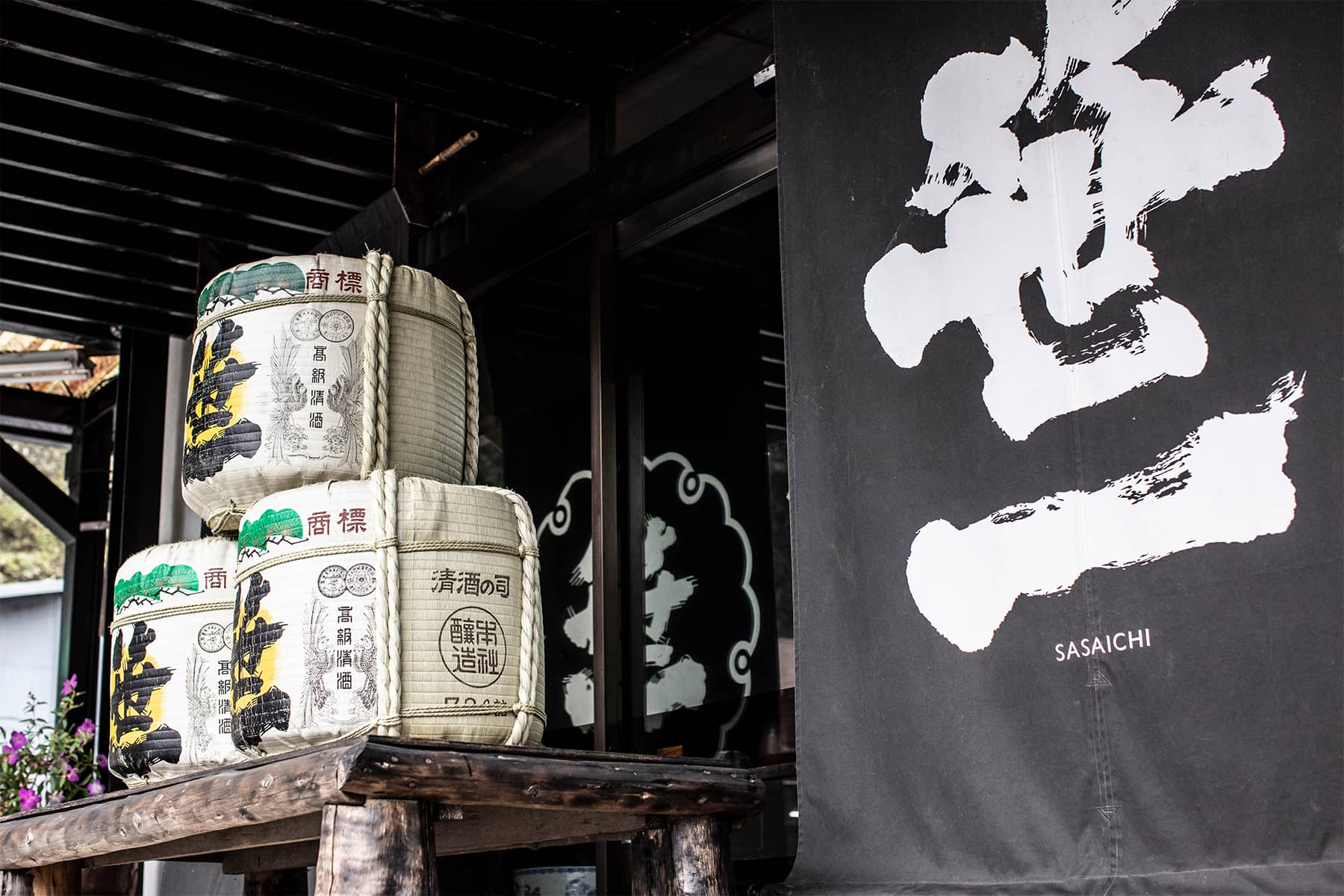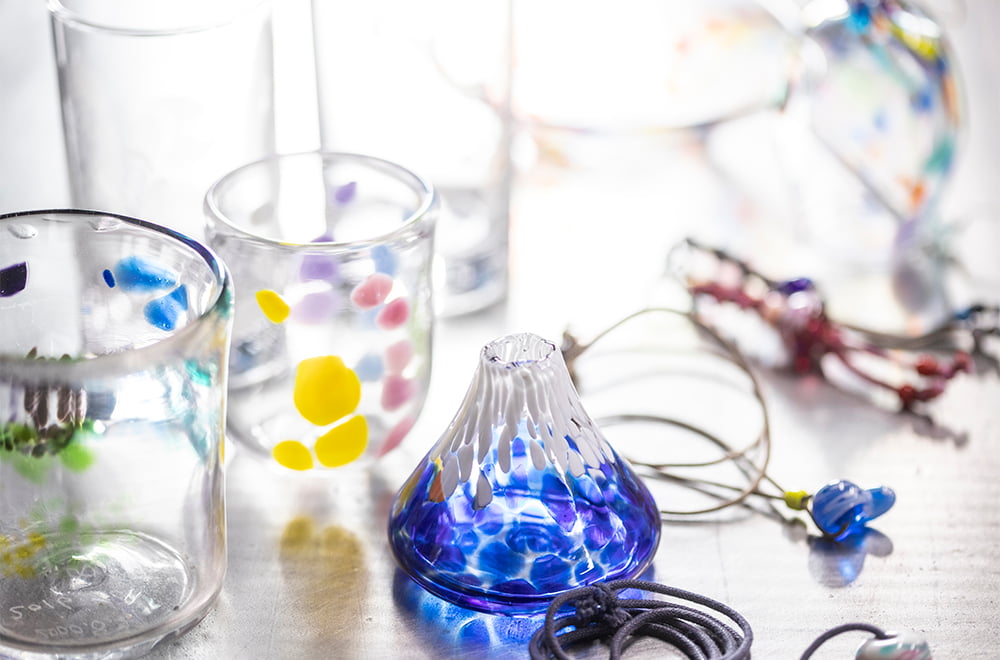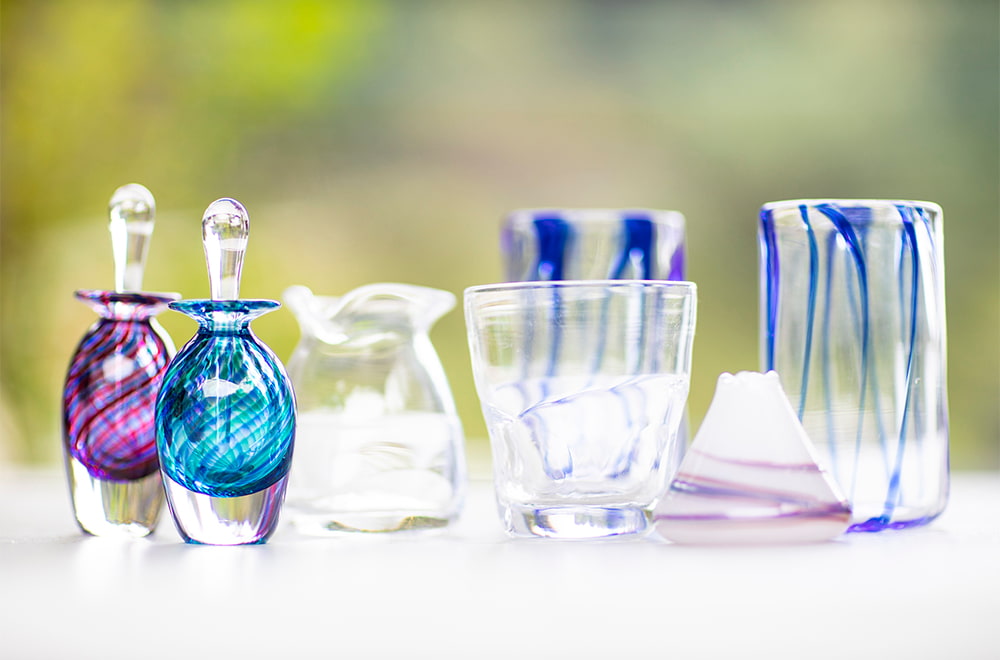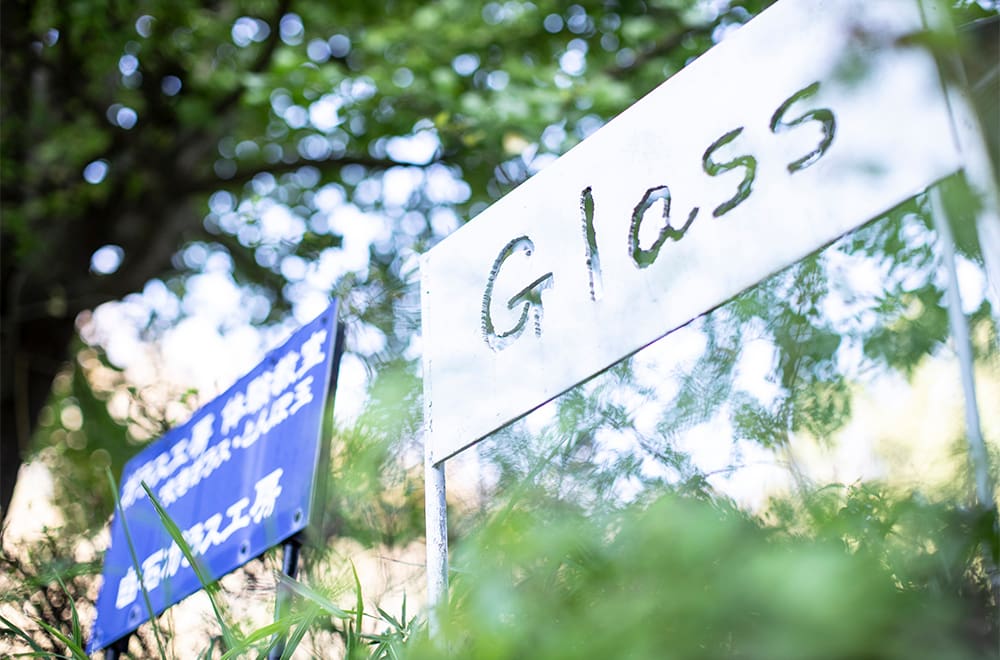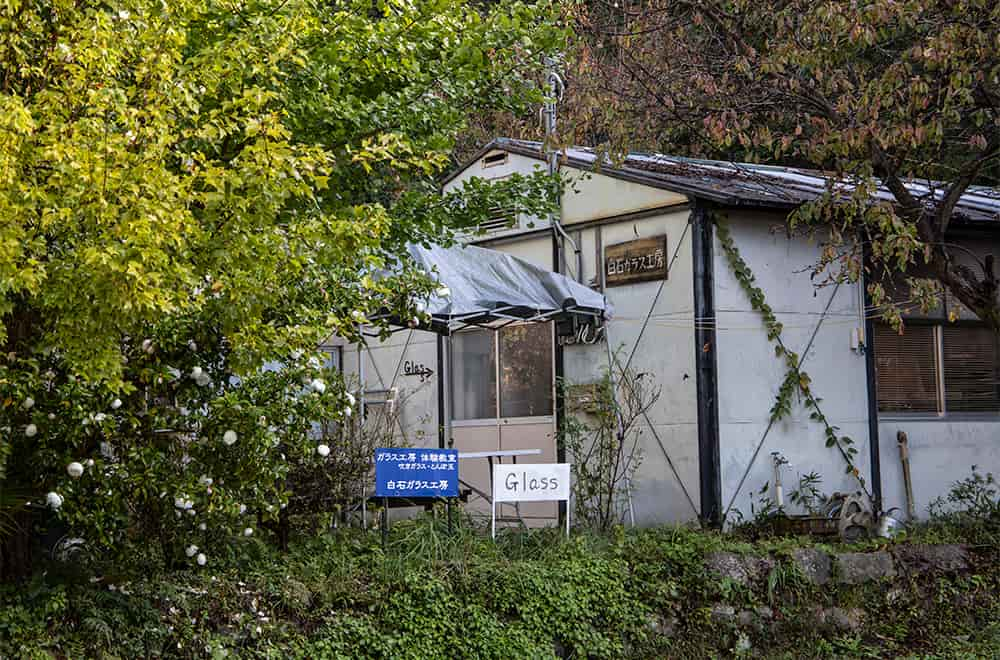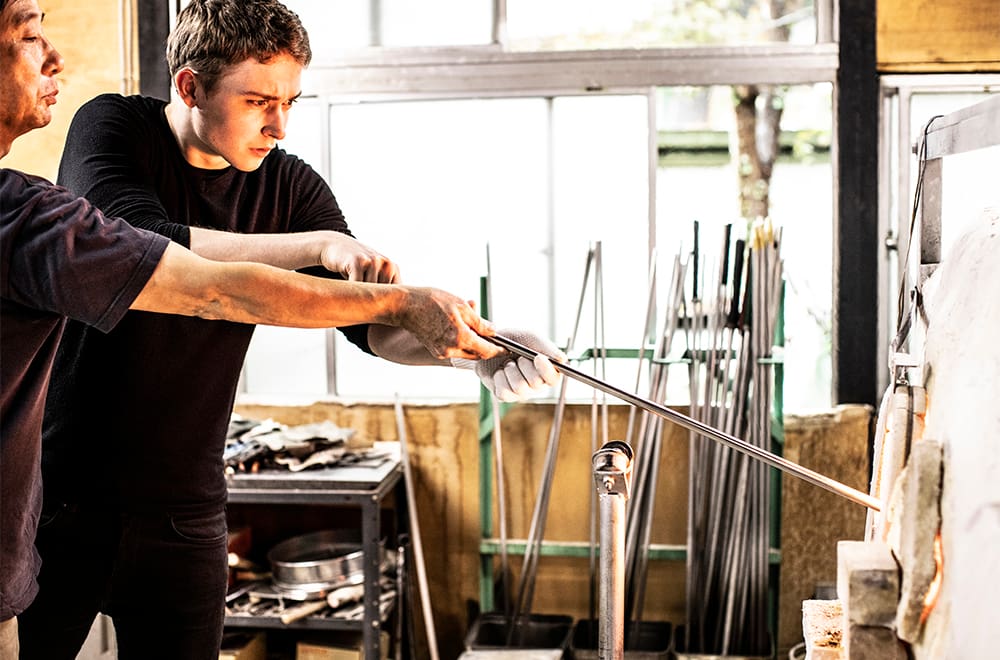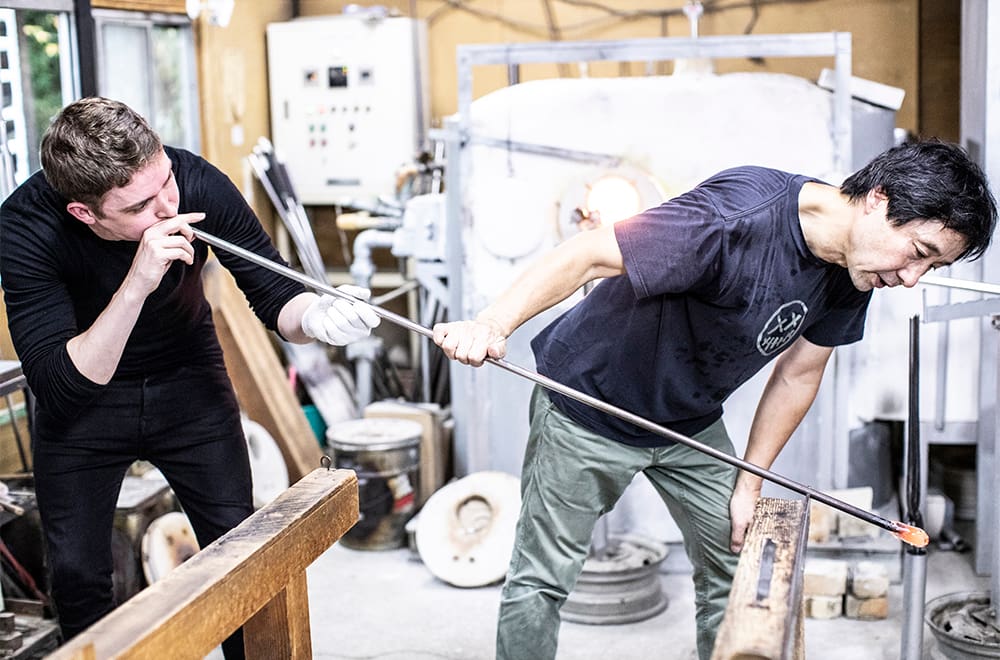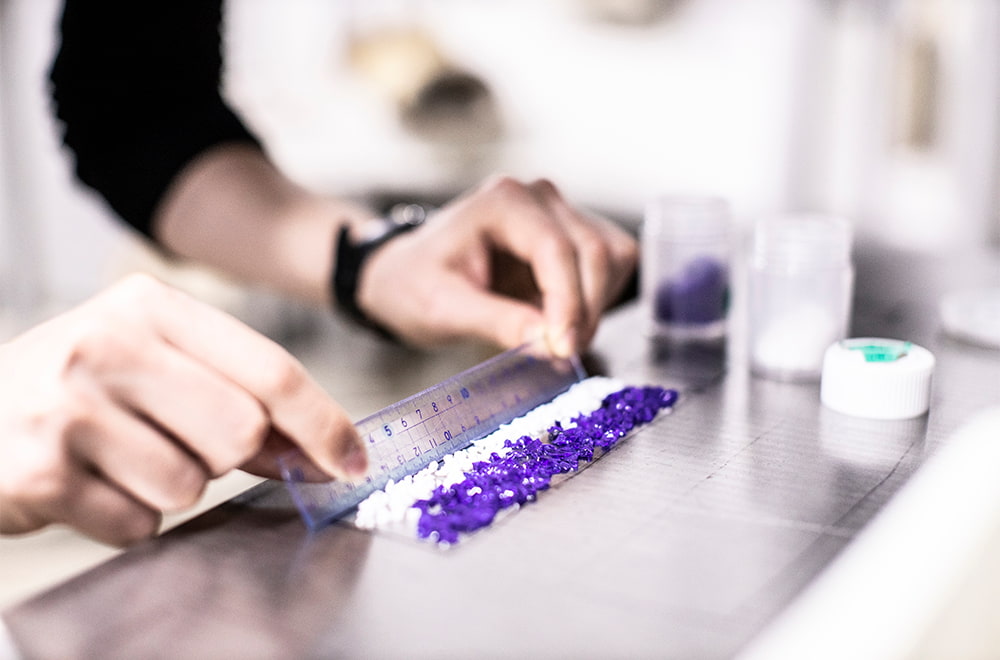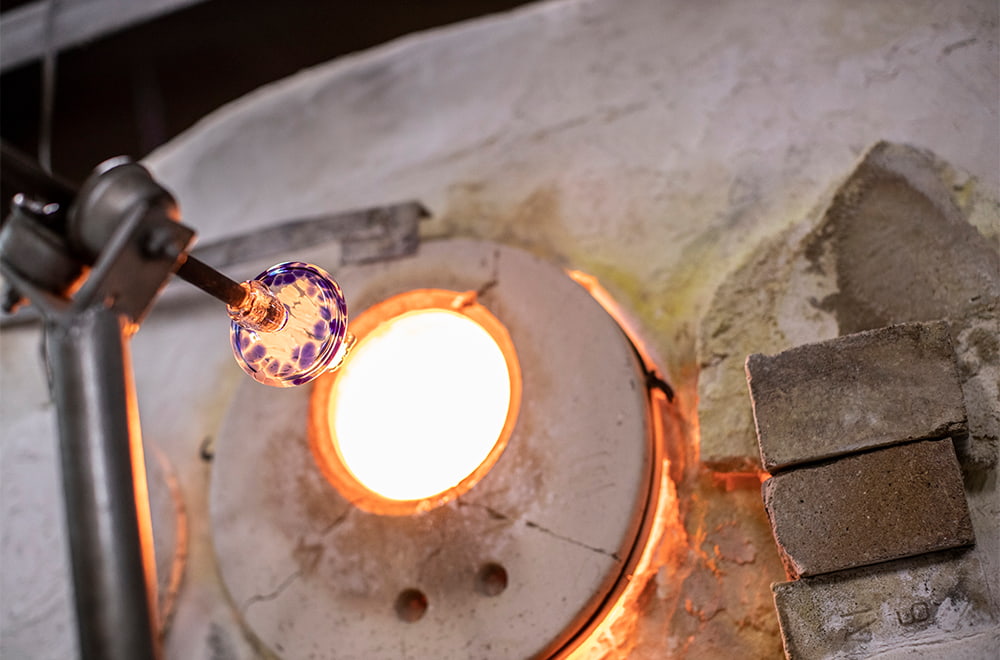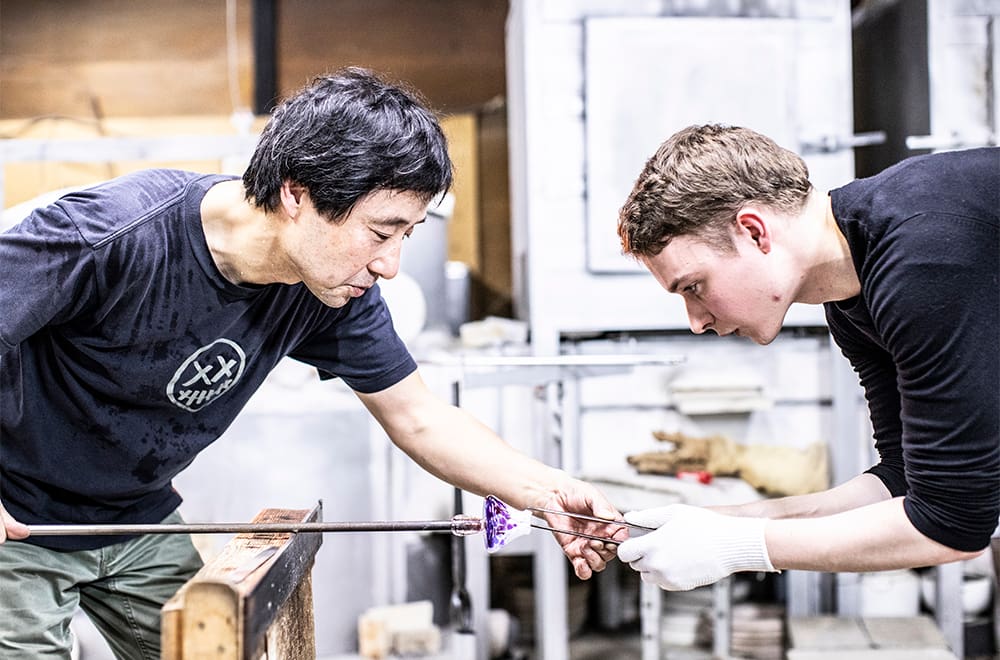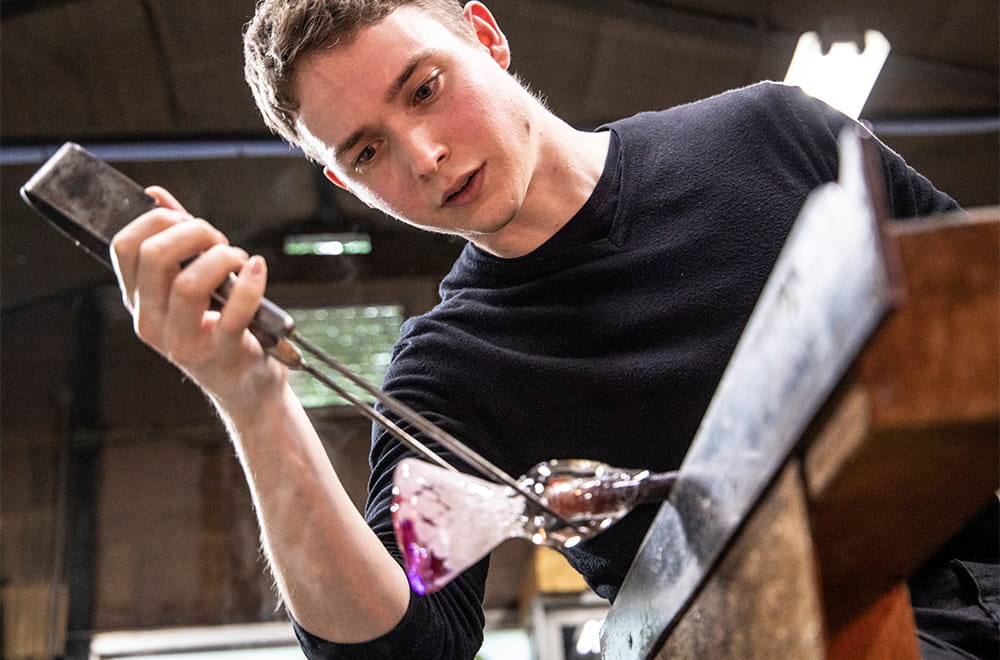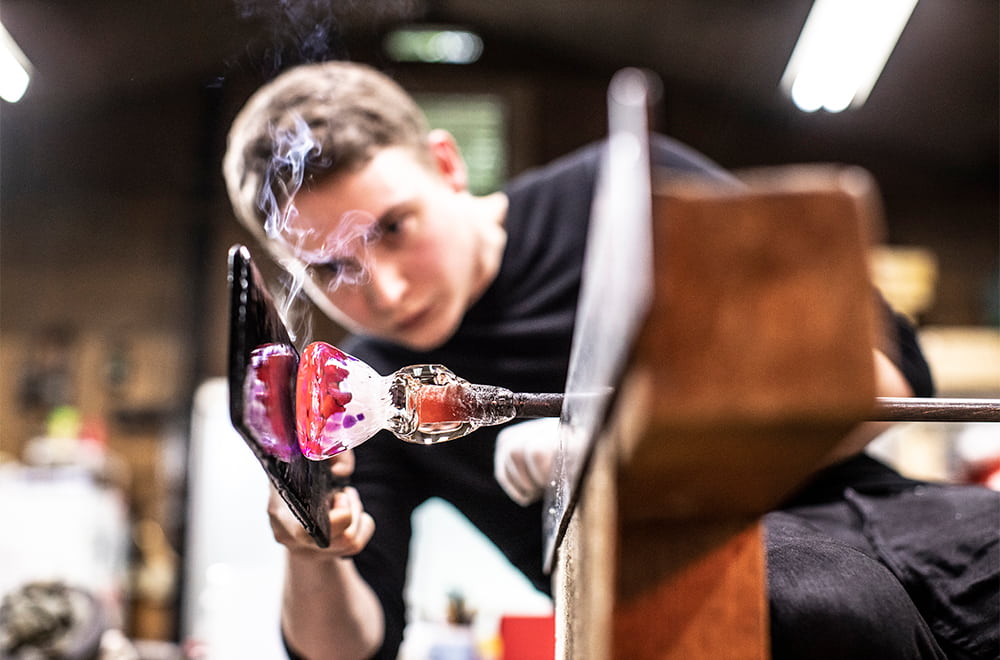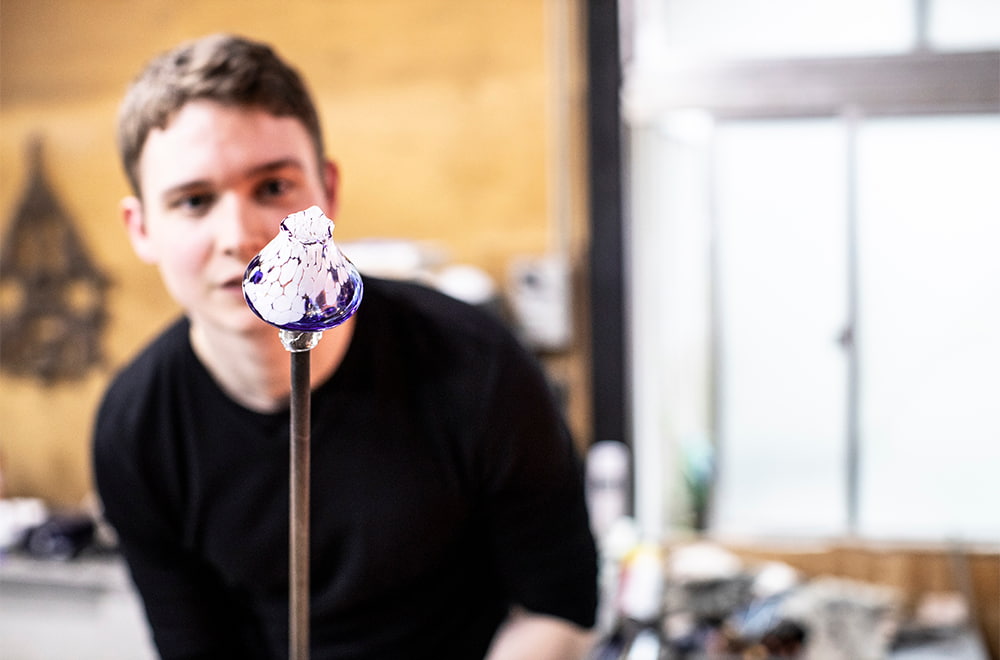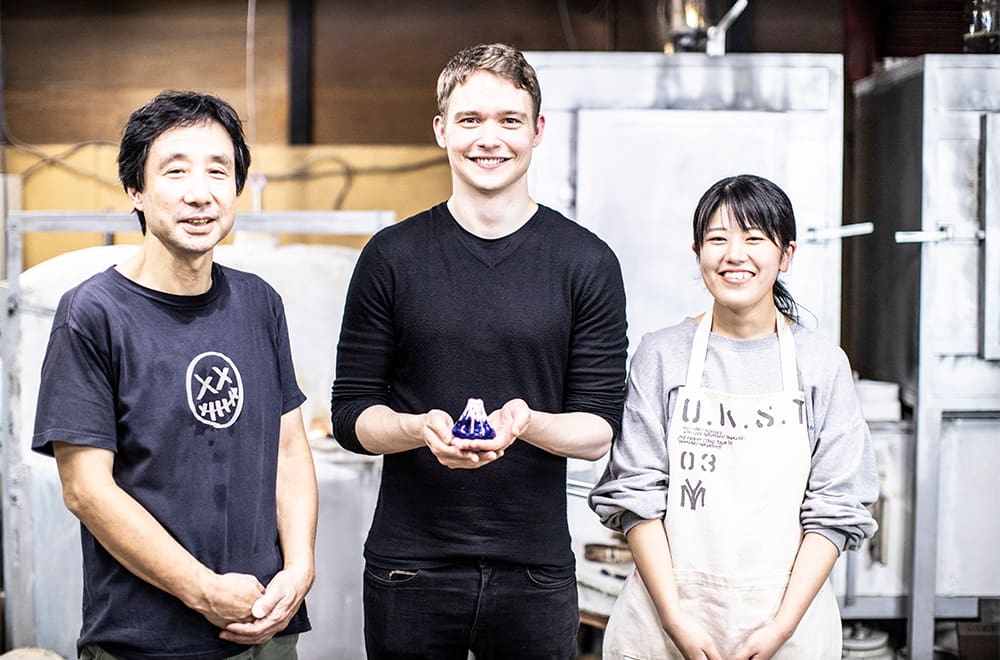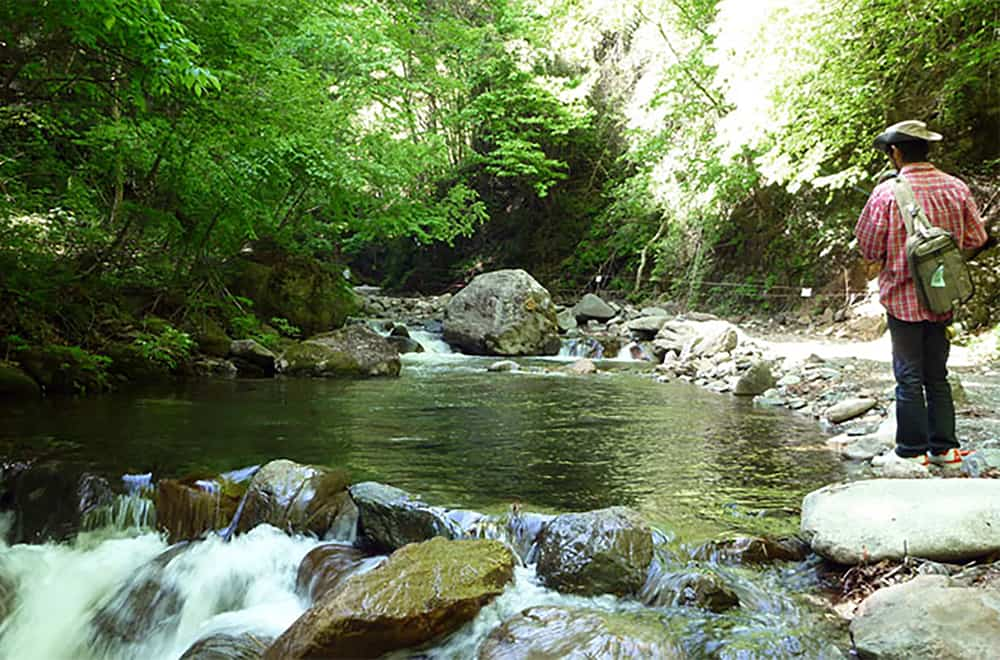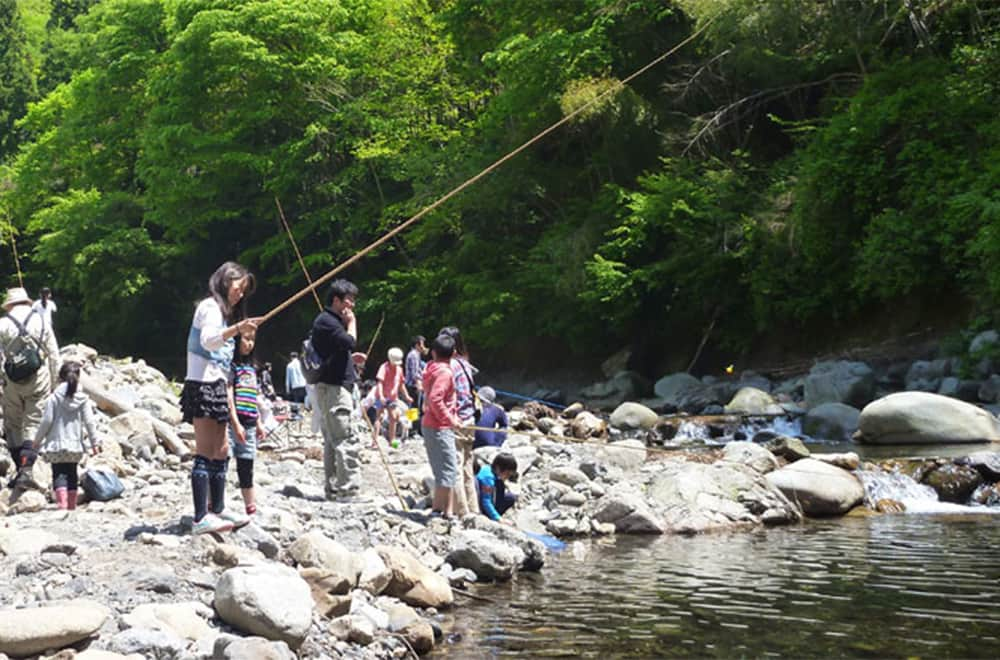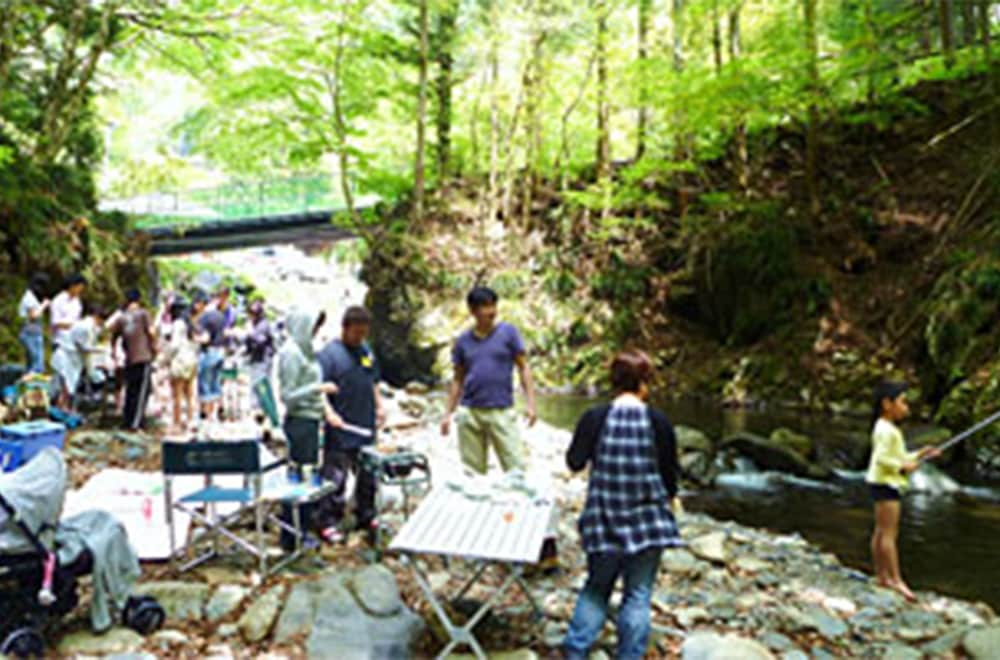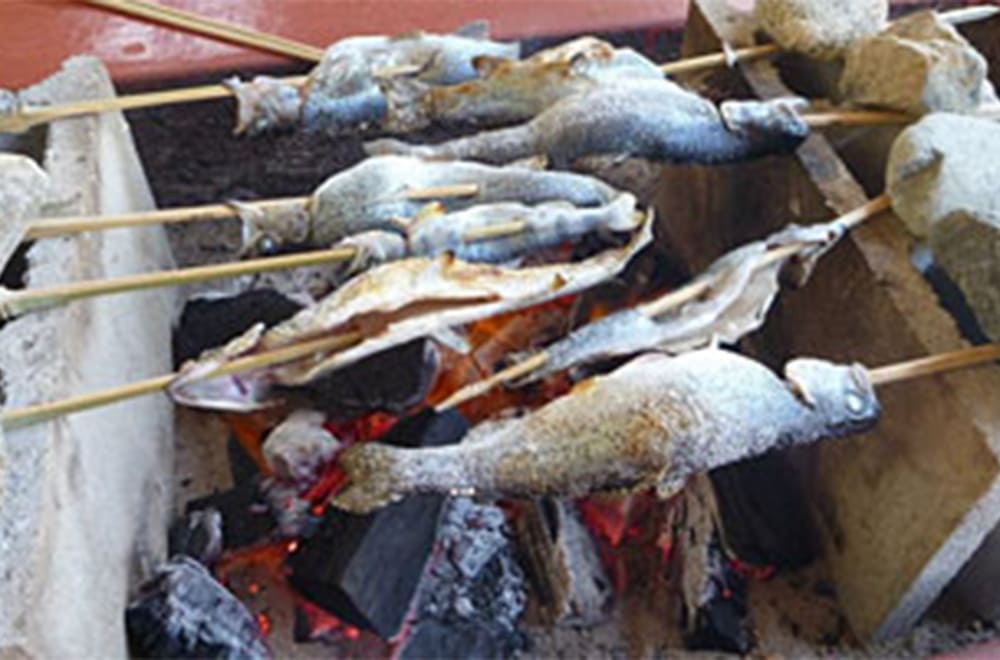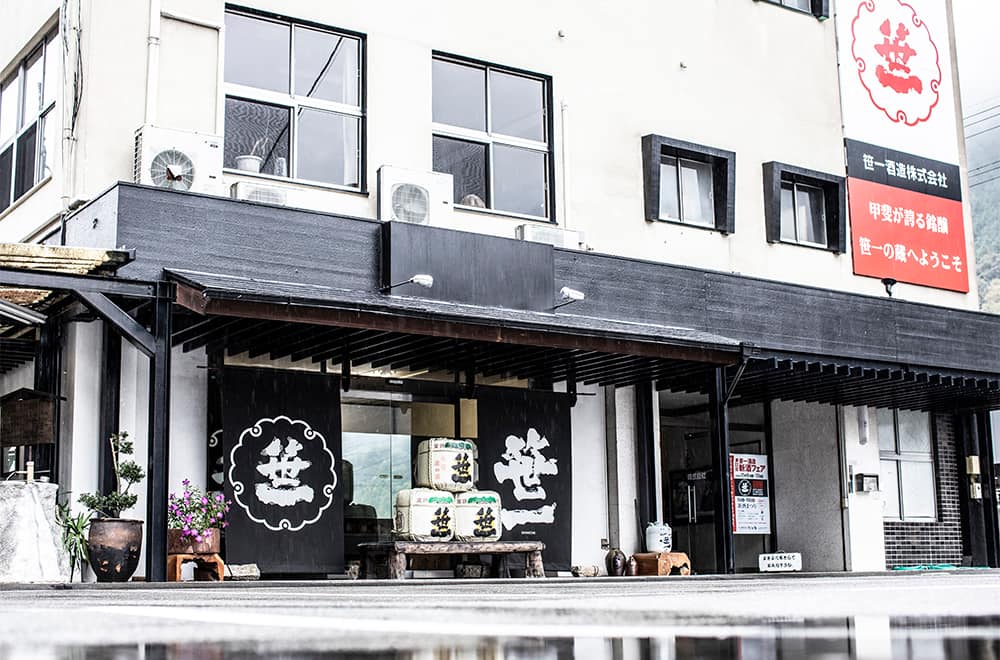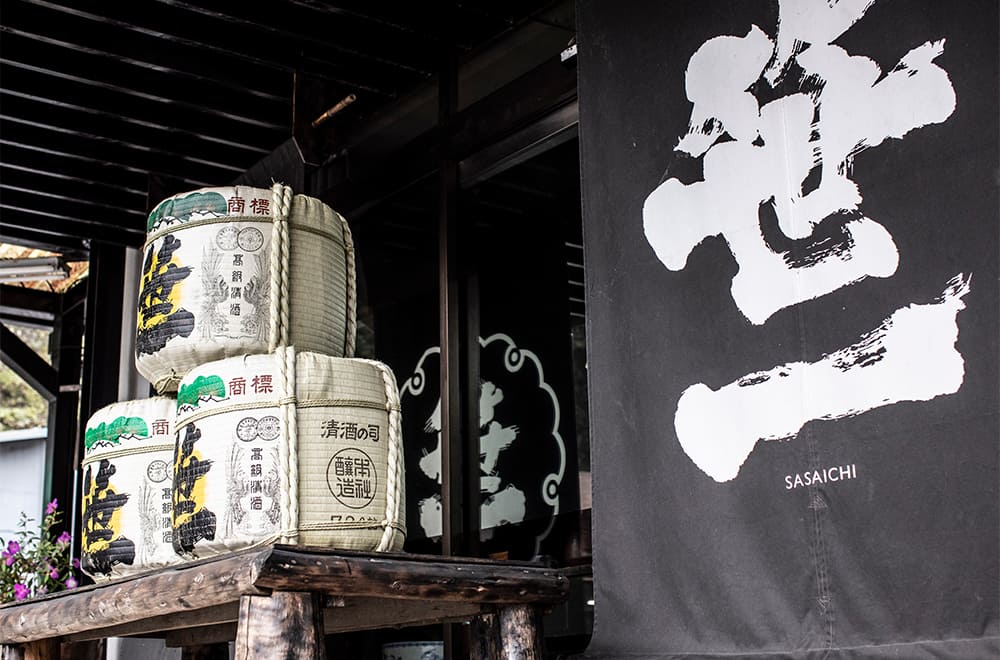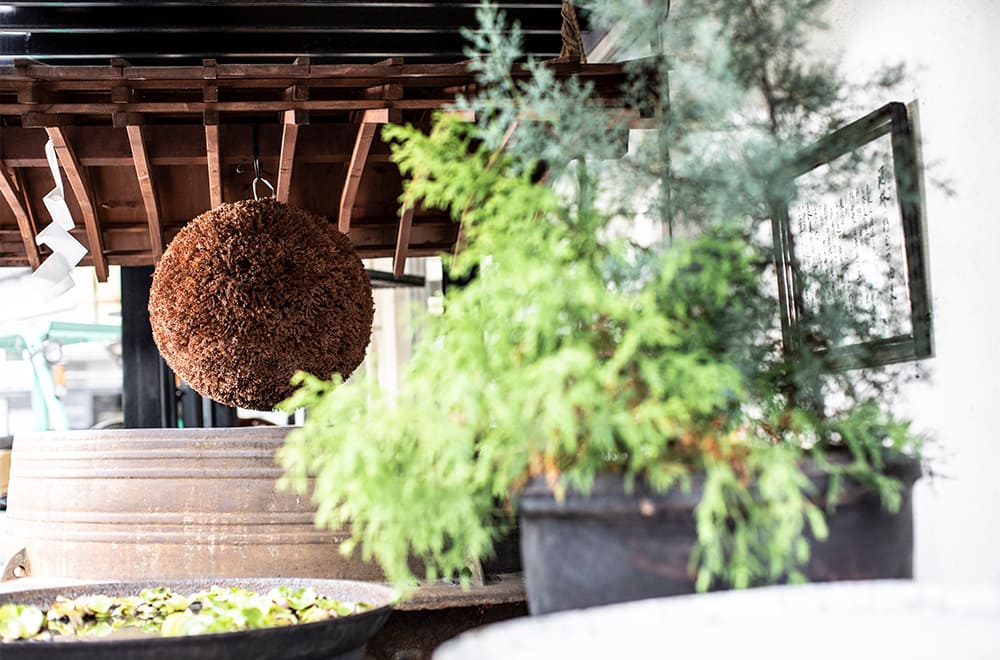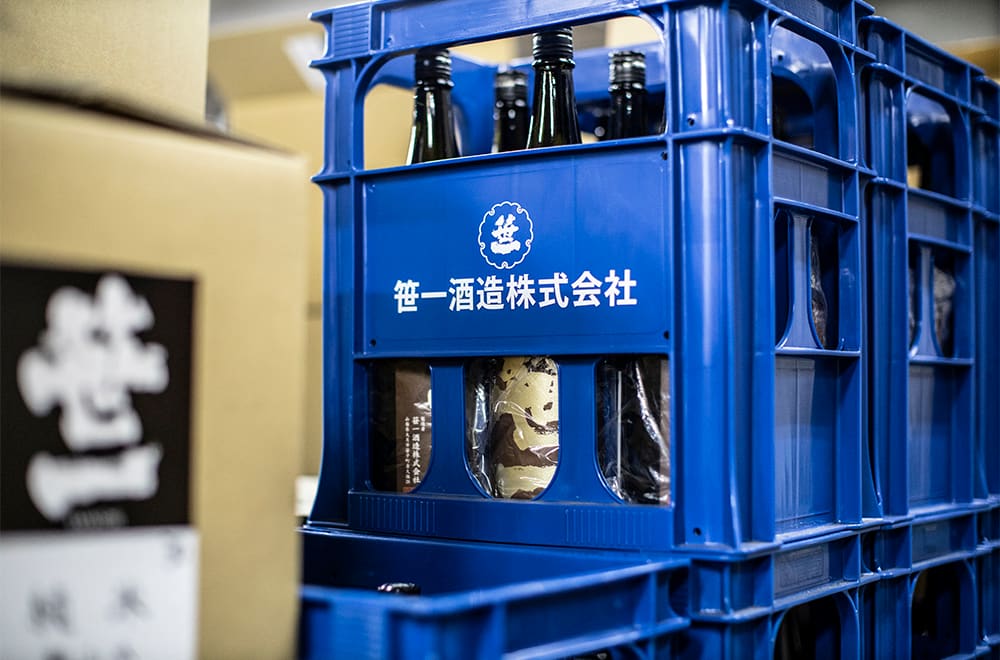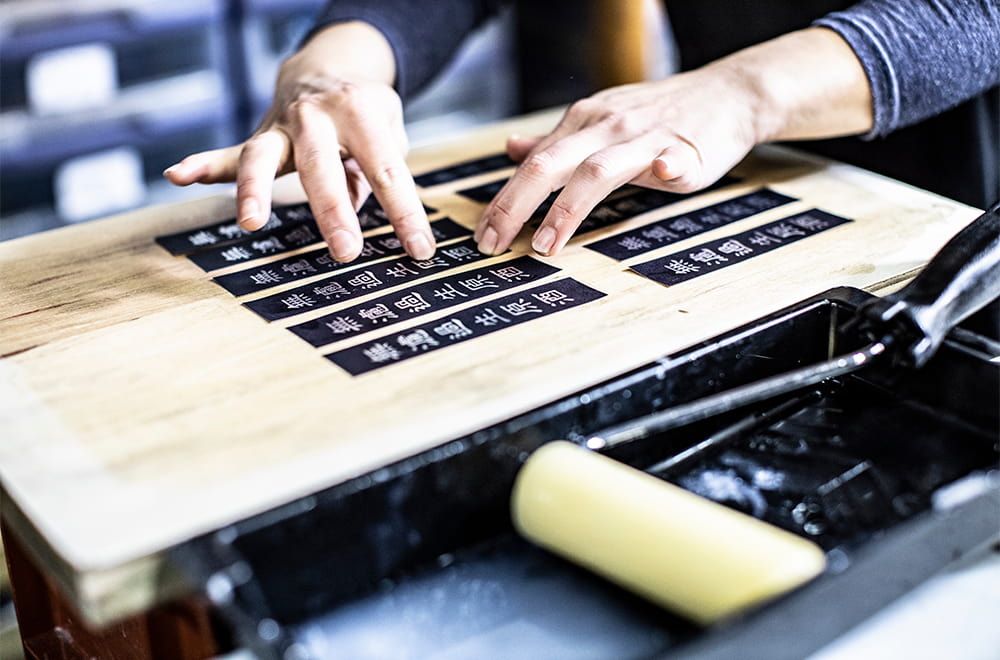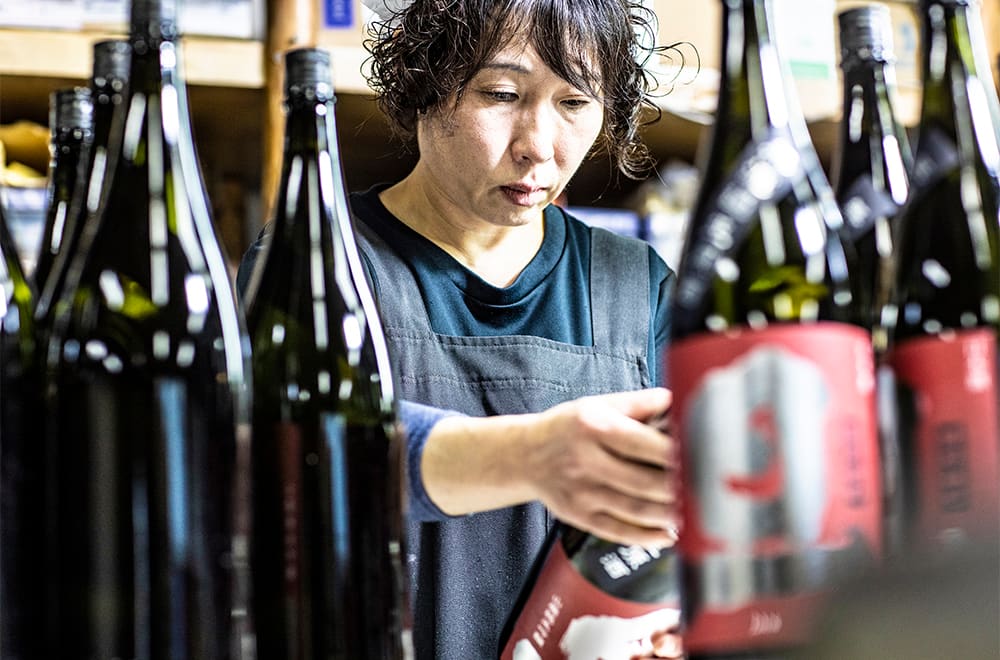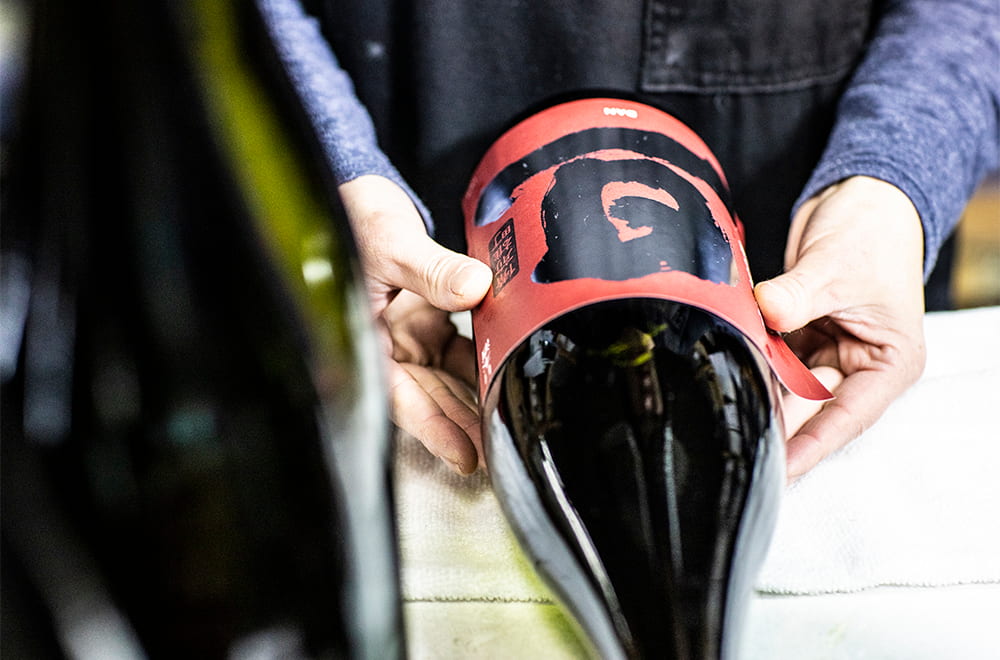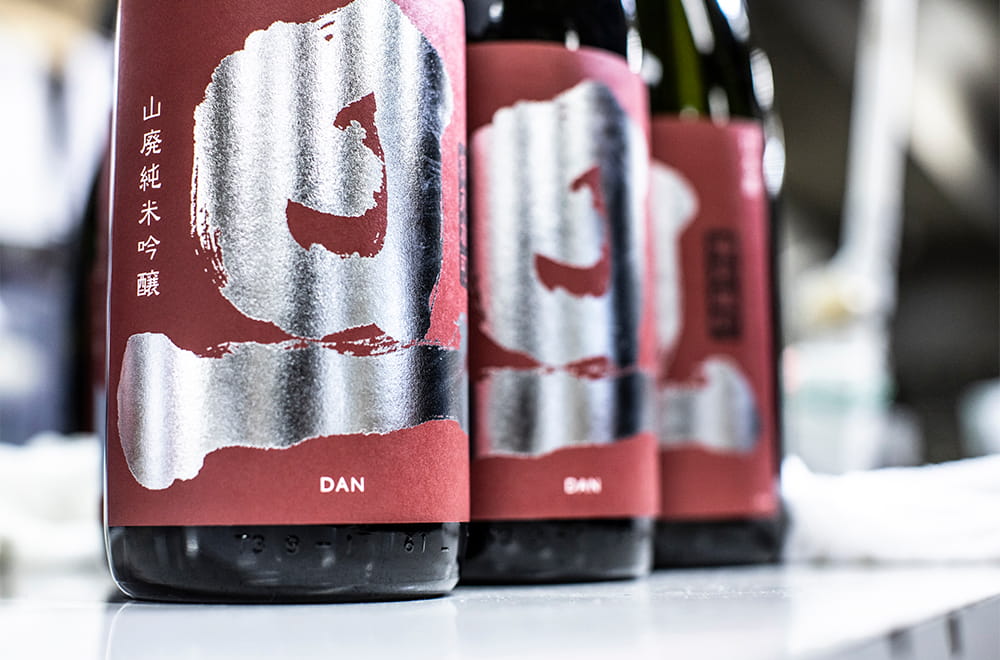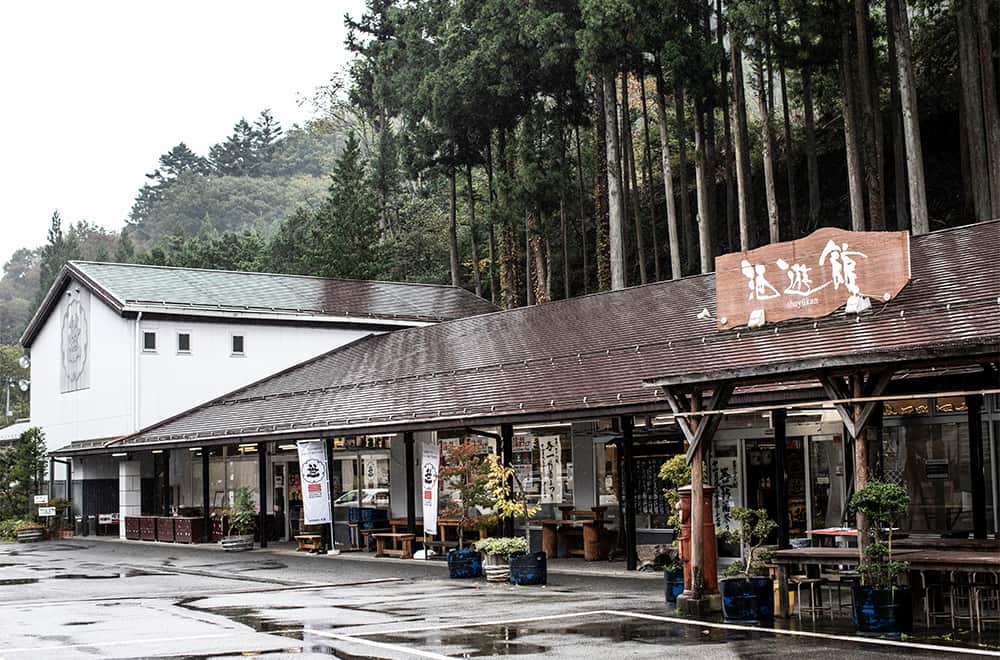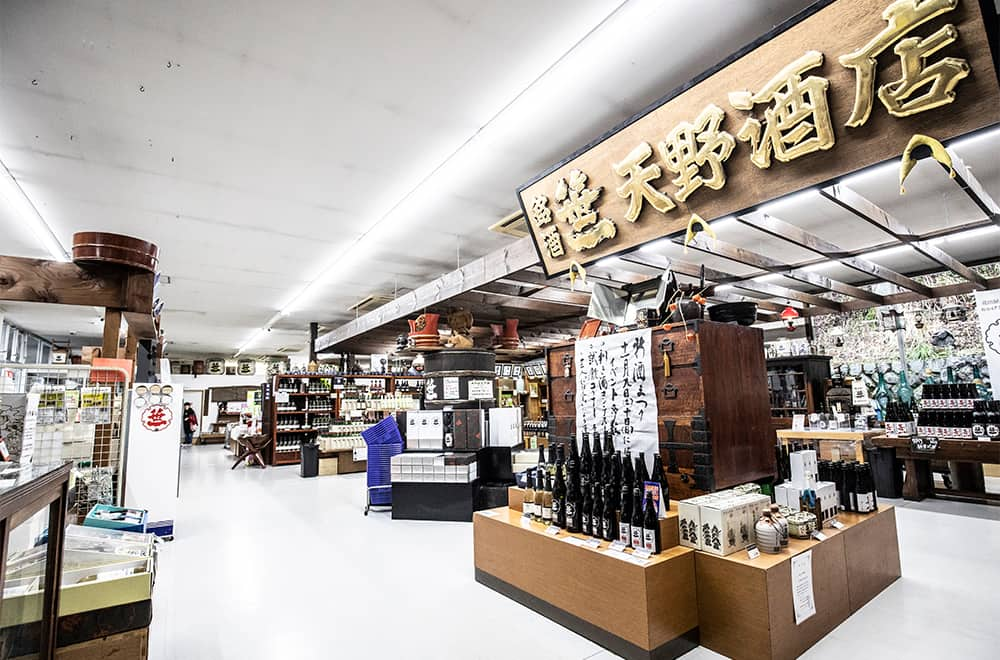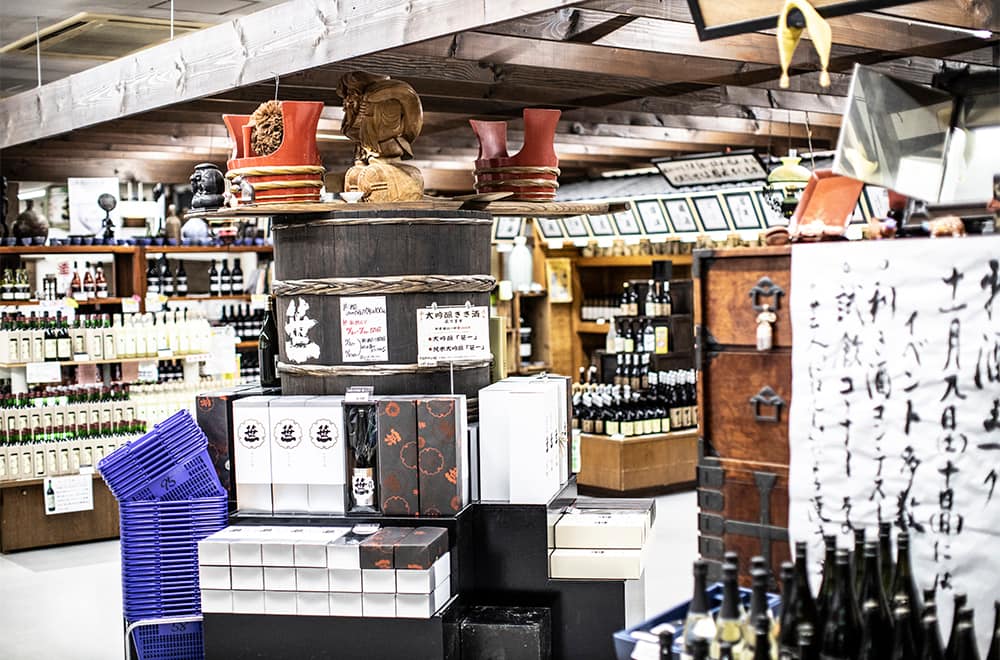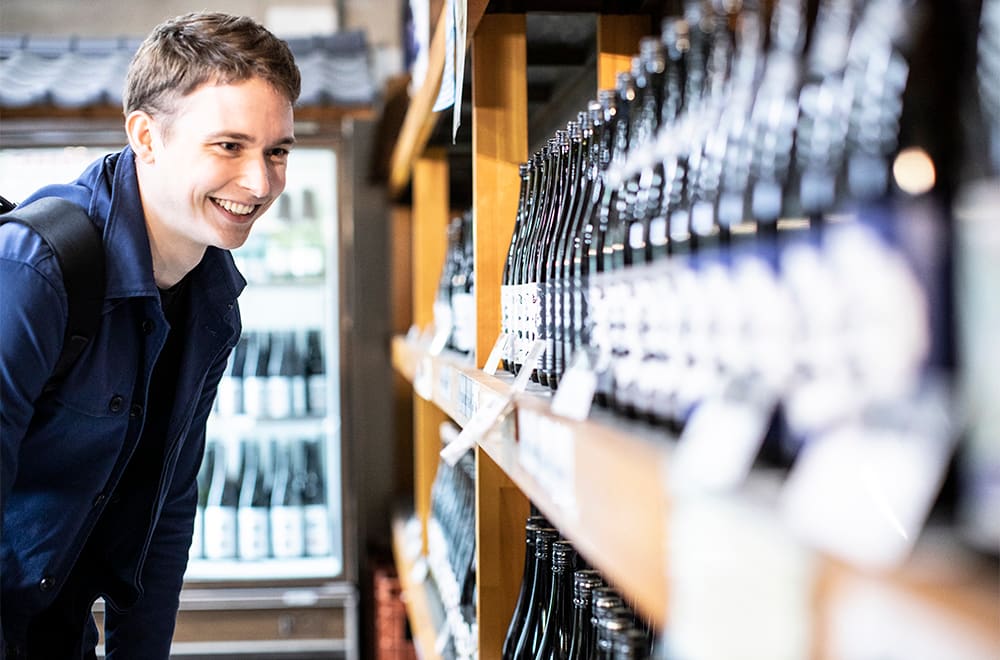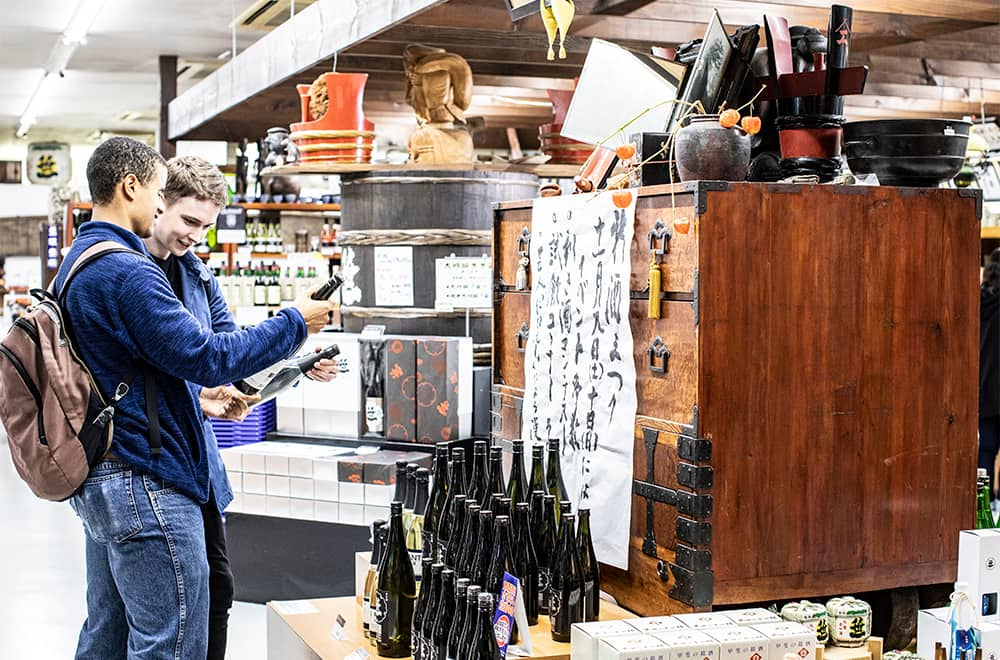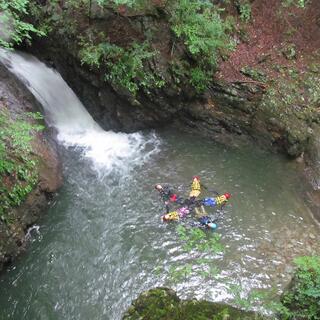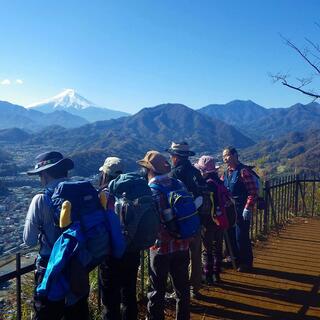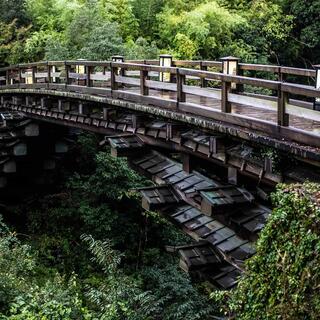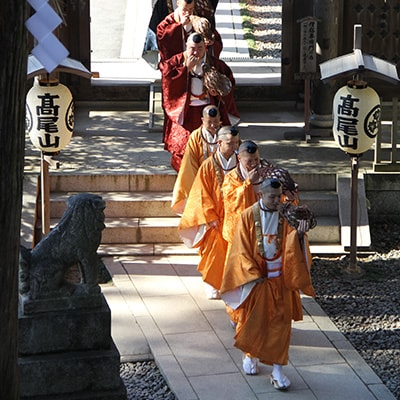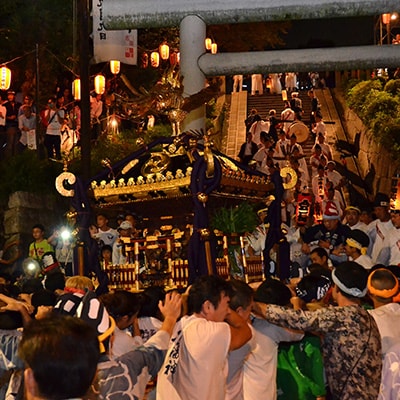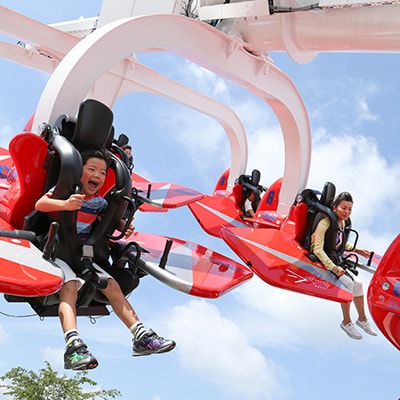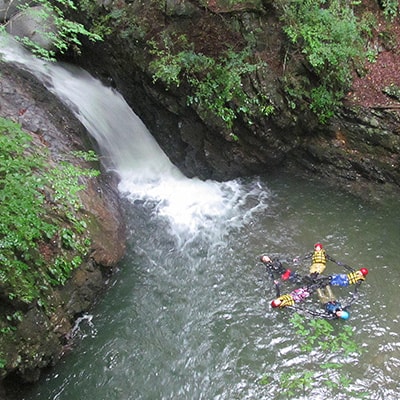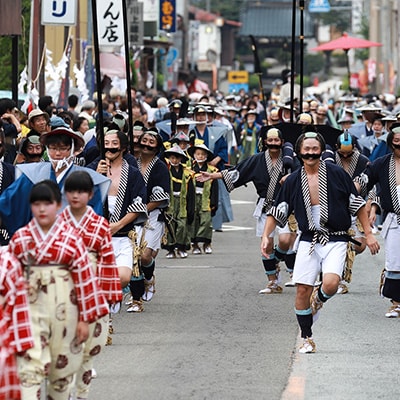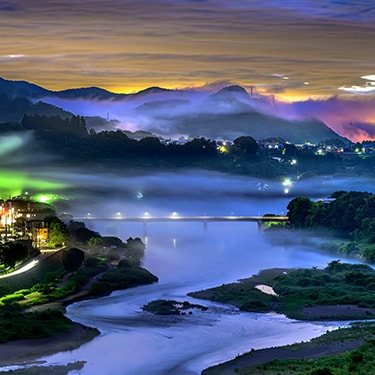Otsuki’s location among mountain valleys and rivers and its proximity to Mt. Fuji provides opportunities for hands-on experiences that cater to the angler, artist, and sake enthusiast.
- TOP
- Special Feature
- Fuji In Hand, Fish to Fry, and Sake to Try
Fuji In Hand, Fish to Fry, and Sake to Try
Shiraishi Glassmaking Studio
The explanations and instruction are primarily in Japanese, but Shiraishi-san welcomes everyone and uses basic English to help you create your glass piece.
Tucked away just off the road at the eastern foot of Magi-Oiseyama—a popular hotspot for viewing sakura cherry blossoms and Mt. Fuji—is the Shiraishi Glassmaking Studio.
A decades-long master of his craft, Shiraishi-san studied and trained at Japan’s sole specialist school for glassmaking and happenchance led to him opening his studio in Otsuki.
There, he offers several different glassblowing courses, from perfume bottles to cute accessories, teaching and guiding you step-by-step with an experienced hand.
By far the most enticing course to attempt is the snowcapped Mt. Fuji piece, but be ready for a challenge; the heat of his hand-built furnace, rotating the blowpipe, forming the glass with the paddle and tweezers will test your multitasking mettle!
But the reward is a one-of-a-kind glass replication of Mt. Fuji to take back with you!
With the exception of the beadmaking and sandblasting courses, all courses require a day’s time for the glass to properly cool before being sent to a specified domestic address (hotel, hostel, etc.).
Narago Fishing Field
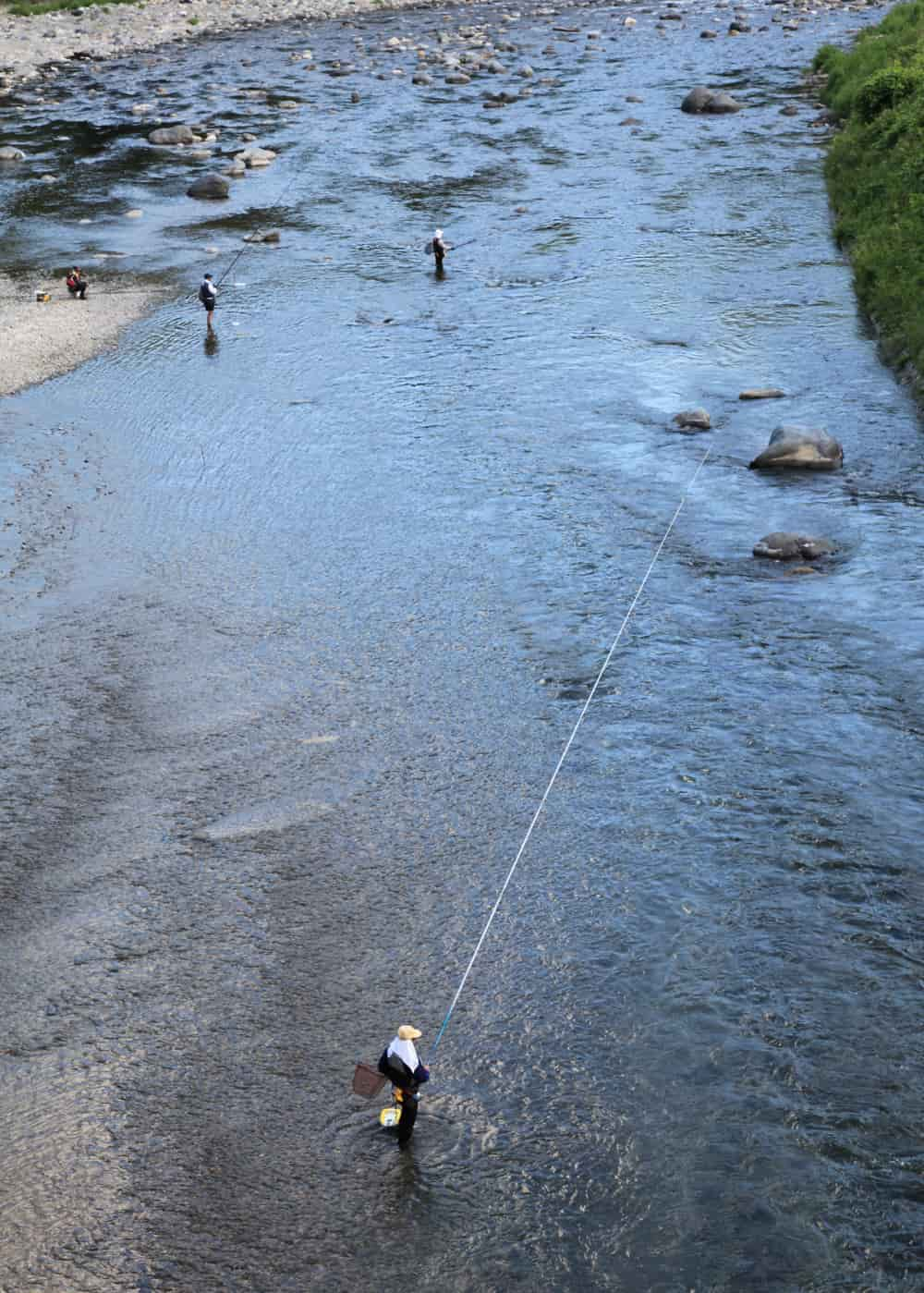
Just a 30-minute bus ride from Otsuki Station, Narago Fishing Field takes advantage of the area’s valley rivers and streams to offer great opportunities for the angling beginner or enthusiast.
All the fishing tackle can be rented, and the facility features five different areas for fishing with bait or lures/fly fishing. The latter consists of four areas—two ponds and two natural river streams—of varying difficulty where you can aim for rainbow trout, char, and varieties of Japanese salmon (depending on the season).
A real draw for Narago is their option to combine the angling experience with a riverside BBQ (requires a reservation). You can cook the fish you just caught over the grill Japanese-style (or have the staff salt your catch up and do it for you) as well as enjoy all the fixings they provide.
Taking in the fresh mountain air, fishing to your heart’s content, and then chowing down on your catch sounds like a tantalizing proposition, no?
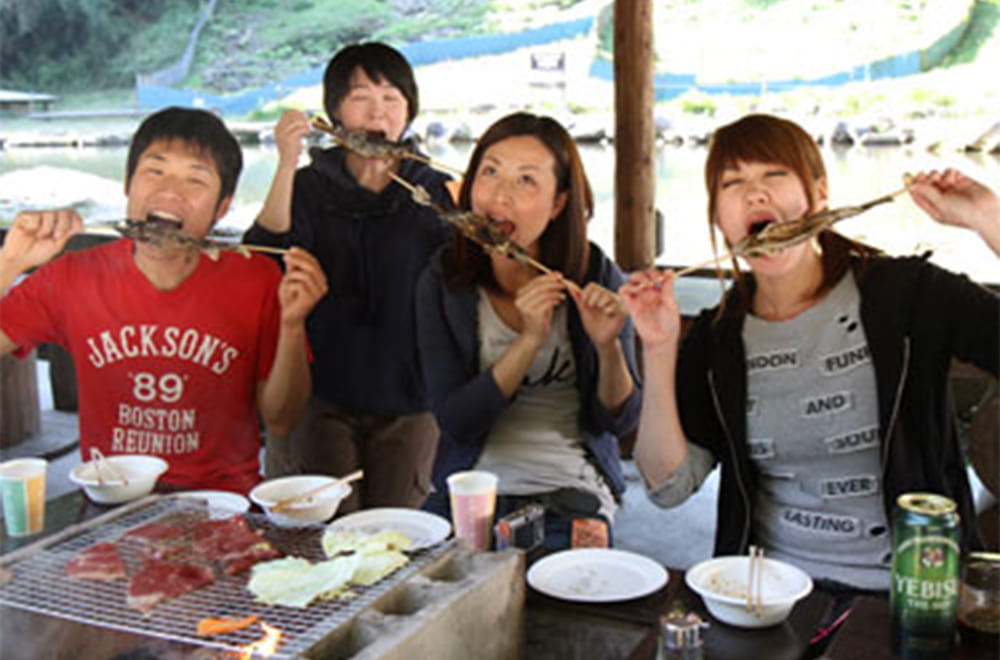
Sasaichi Sake Brewery
The family-run Sasaichi Sake Brewery celebrated its centennial anniversary in 2019, but can actually trace its roots back to a small shop that opened in 1661 (!) that was later inherited by the brewery’s founder, Amano Hisashi.
Sasaichi makes a strong statement right from its name—sasa is another way to say sake while the ichi (one) represents their quest to create the best sake in Japan. In that quest, the brewery made a momentous decision in 2013 to do away with mass-production and make a return to handcrafting high-quality sake—even the labels on the bottles are affixed by hand.
Sasaichi’s new approach to sake brewing resulted in their new Dan (“dawn”) brand of sake, which has won several domestic as well as international awards and is offered at Michelin-starred restaurants.
Any visit to the brewery requires a stop by the Shuyukan (lit. “sake fun hall”) next door.
This display area/shop and café—with a variety of typical Japanese fare—features not only their trademark sake, but also an extensive array of their award-winning Olifant brand of wines and other sake-related goods for purchase. They even have non-alcoholic sake-flavored candy!
The real draw for connoisseurs will be the tasting corners with sake, umeshu plum wine and other bottles on chill for you to try—as long as you are not driving—if you want to make sure you know exactly what you’re getting.
Japan has very strict laws against drinking and driving/riding, so please use public transportation if you wish to taste any alcoholic beverages at the Shuyukan.
If you’re new to sake, a bottle of premium grade junmai ginjo (made with highly polished rice and no additives) presents something fruity and easier to drink. Since Sasaichi uses water from Mt. Fuji, think of buying a bottle as taking a part of the mountain home with you.
